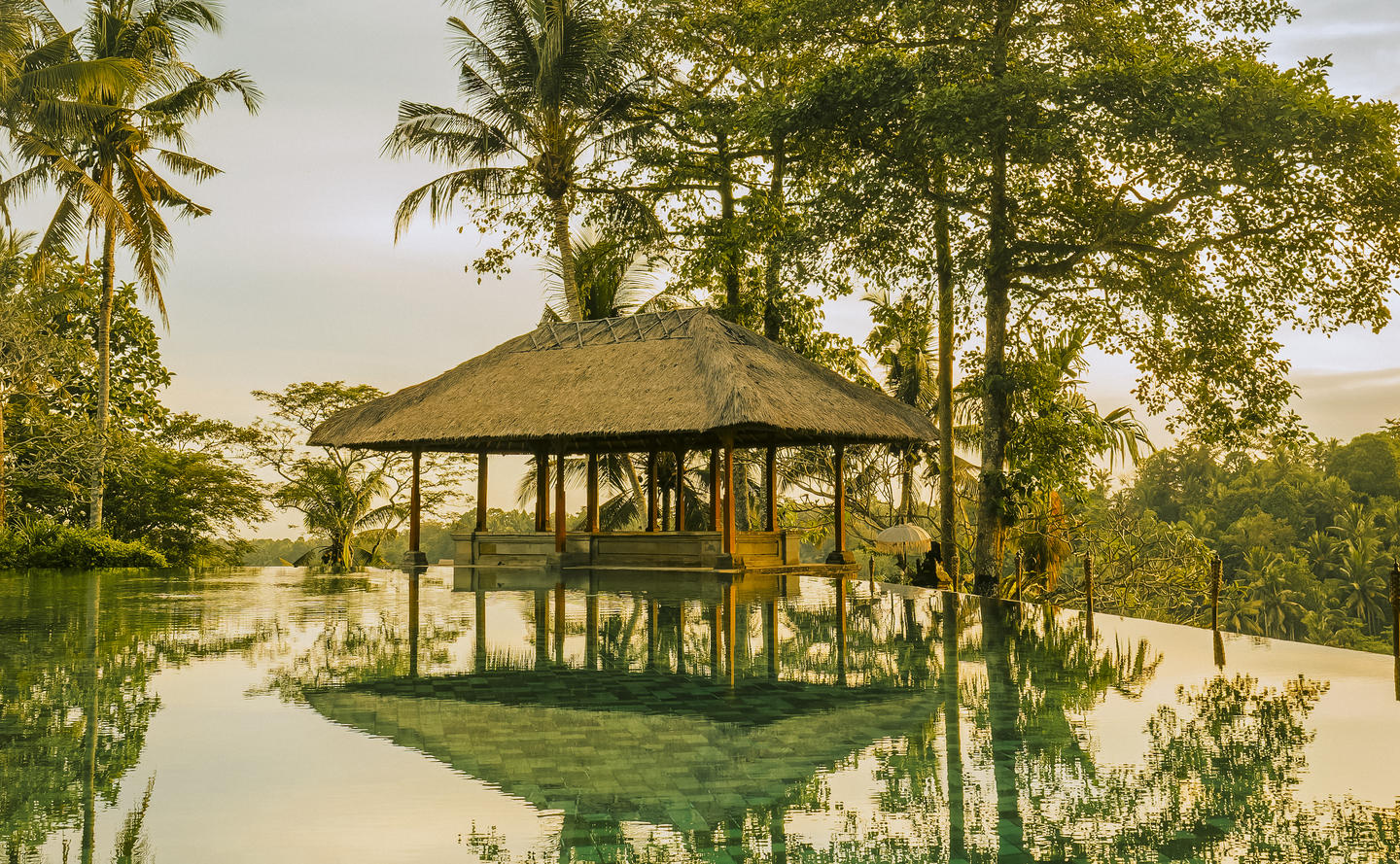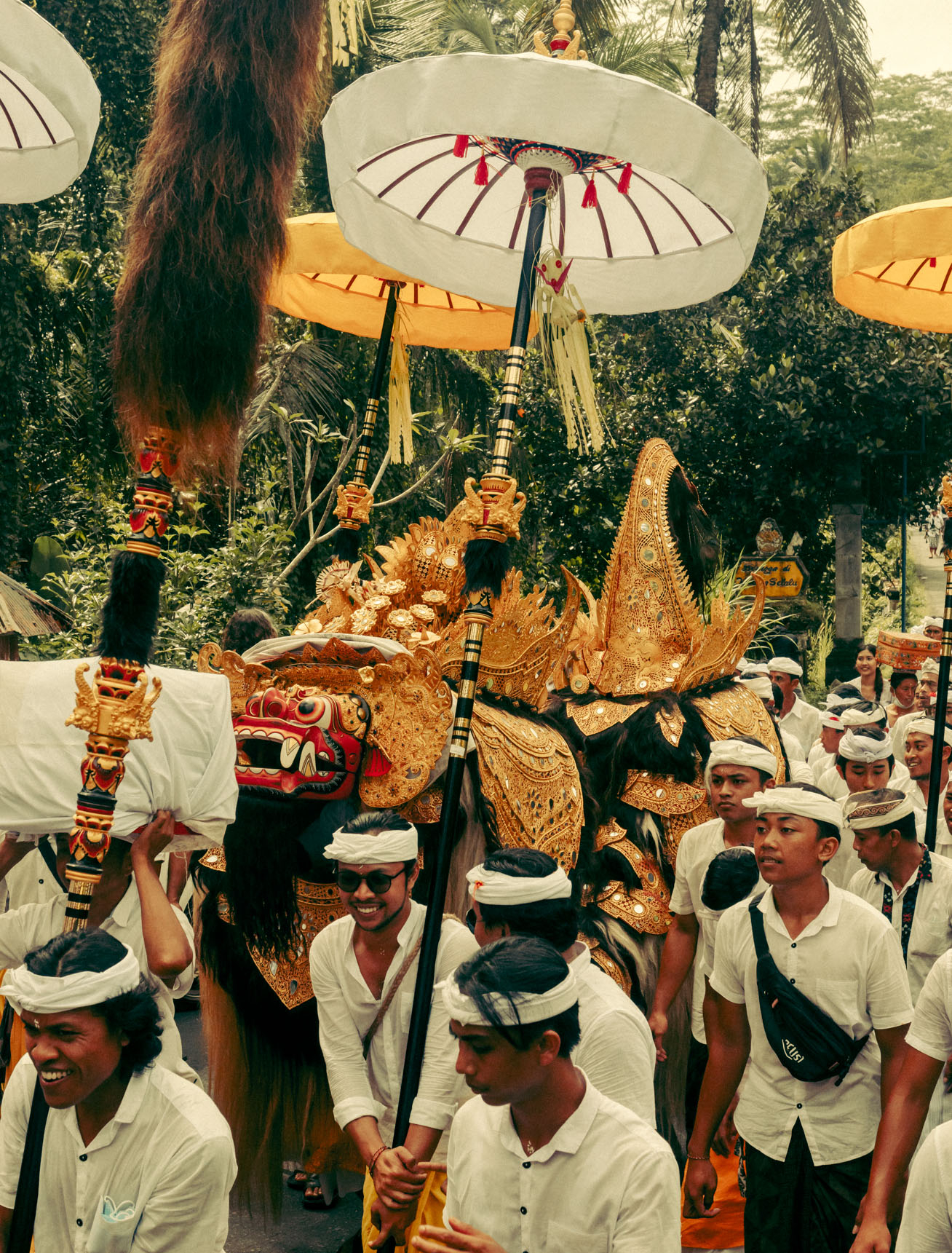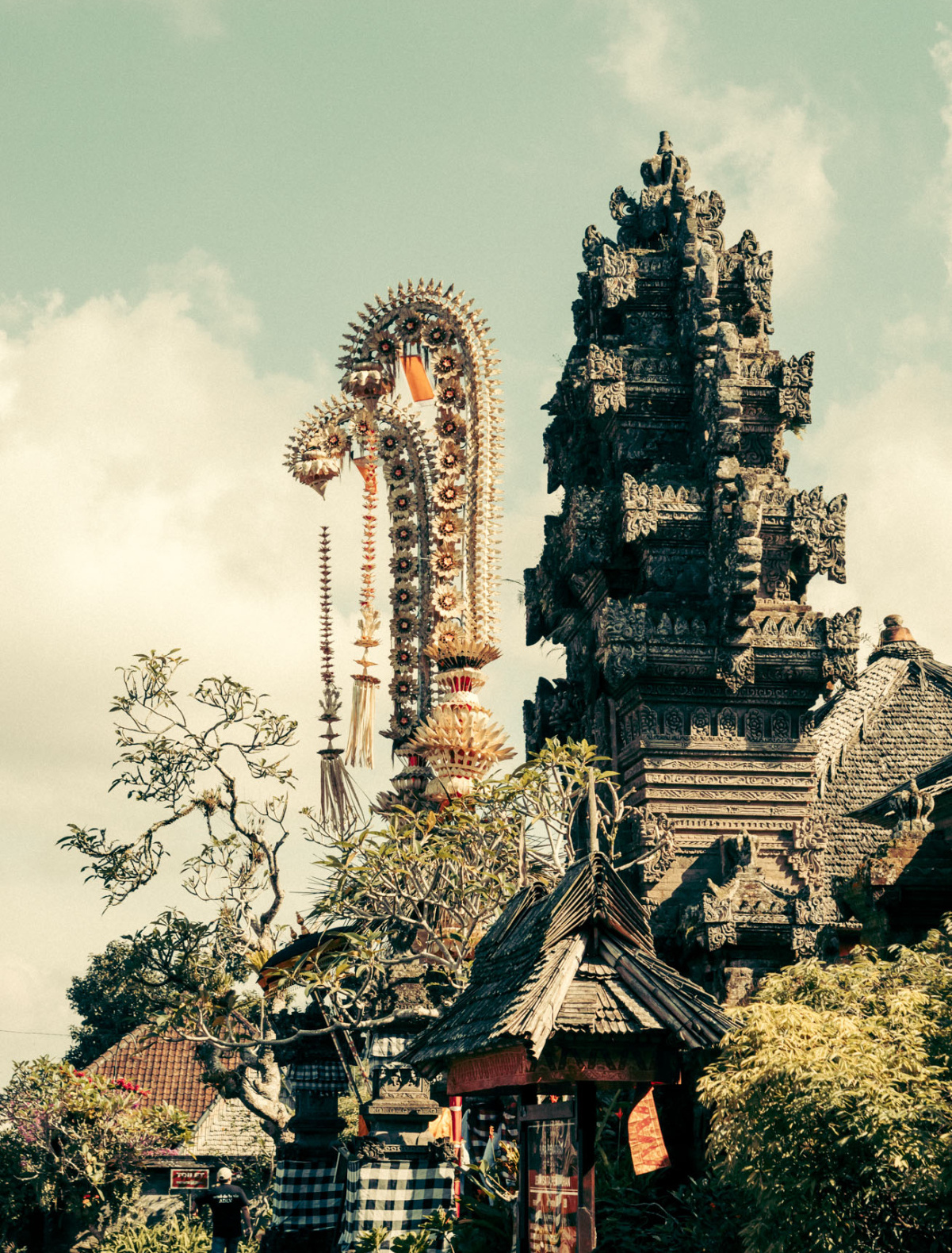アマノイ、ベトナム
ヌイチュア国立公園とユネスコの生物圏保護区に囲まれた、緑豊かなベトナムの海岸線を望む場所に、アマノイは佇んでいます。ここはヴィンヒー湾を見下ろす自然の楽園です。
Photography by Jérôme Galland
Words by Xerxes Cook
Amandari, Indonesia
The Balinese believe that any visitor to the island is the reincarnated soul of an ancestor who has returned to visit. When the French photographer Jérôme Galland and I are welcomed into Amandari it somehow feels true. Our shoulders drop and we begin to peel off the layers of our lives previous to Bali.

We are here in Ubud in early August, during the festival of Galungan, when the Balinese believe the gods and the spirits of their ancestors return to the island. Taking place at the end of the 210-day traditional calendar, Galungan's colourful ceremonies and long processions line the streets far and wide, and the Balinese dress the island, and themselves, as beautifully as possible to welcome everyone home.
Along with the cool breeze of the dry season lapping over the island, it is the reason why everyone smiles at one another, and us through the car window, as we make our way through the busy traffic and beach clubs of the island’s south coast up to its lush, calm interior. Here on the Island of the Gods, “everywhere looks like a temple,” Jérôme utters in disbelief.


We make our way inland, passing by the penjors which line the streets outside of every home. Long bamboo poles ornately decorated with symbols of the island’s landscape – fanning coconut leaves represent the jungles and the rice fields, their stems it’s rivers, and a small shrine representing the Besakih or ‘The Mother Temple’ atop Mount Agung, Bali’s tallest mountain and its axis mundi. The penjors’ great height helps guide their guests down from the heavens back home.
For perhaps nowhere else on Earth is the unseen world, the dunia niskala, more visible than in Bali. A cosmology mirrored in the island’s topography, that sees the mountains, source of the lakes and rivers and thus the island’s fertility, embody everything holy and healthy. The ground and the choppy seas which surround the island — and until the advent of tourism, and surfing, were the exclusive preserve of a few intrepid fisherman — are magically dangerous and home to evil spirits.
In this dynamic, the in-between, the realm of us humans becomes a liminal space in which these two forces must be kept in balance. Together they form the trinity of the Tri Hita Kirana, a philosophy of living in harmony with nature, with the spirits, and with one another, which permeates every aspect of life on this paradise island. It is why three times a day, four million Balinese take a break from whatever they are doing, wrap their legs in a sarong as protection from what lies beneath, and give an offering of colourful flowers, typically with a little food in the form of rice, a sweet for dessert, a cigarette for a post-snack smoke, and a stick of incense for sending the devotee’s prayers upwards towards the heavens. A ritual act of devotion that gives the collective consciousness of the island a palpable presence, felt in even the hardest of hearts.


Amandari is subtle, built on human scale. Its connection to the community deep and genuine. In the late afternoon, children from the village practice Bali’s famed classical dance, legong, a complex choreography set to the tune of percussions, played by none other than the little dancers’ fathers. The soft chimes echo during the ‘eternal sunset’ which bounces silhouettes of the Batukaru mountains off the infinity pool.
"Amandari is subtle, built on human scale. Its connection to the community deep and genuine."
A stone statue of a tiger sits in the grass besides the resort's entrance bale. Draped in a black-and-white poleng, the ceremonial checked cloth that symbolises balance between the worlds above and below, the statue honours the legend of a 7th century Indian priest, Maha Rsi Markandeya, who brought with him a tiger he had picked up in Java on his travels to the island.
Commemorated in a panel of murals carved into the lobby’s sandstone, legend has it that during a meditation atop Java’s Mount Semeru, the rishi opened his eyes and saw a flash of blue light in the distance. He decided to follow it, across the narrow straight dividing Bali from Java, first to Kedewatan, where Amandari now sits, then further north to Taro village and then onto the southern slope of Mount Agung, where he built the island’s mother temple, Pura Besakih.
Prior to his departure back to India, the priest had a statue of his feline companion, the tiger, built to remind the residents of Kedewatan that their village had been blessed. This stone tiger sits 129 steps down the valley from Amandari on the shore of the River Ayung, Bali’s holiest.


On our last morning, we venture down through the rattan vines, giant sugar palms and prehistoric ferns of the rainforest to pay our respects. We reach the riverbank, and a jungle penjor with fresh leaves to commemorate Galungan gives us a clue of where to find the statue amongst the undergrowth. At first, all we can see are boulders. But as our eyes adjust, we make out the outline of two eyes, a nose and a mouth, upon the stones that make up the shrine’s perimeter walls. Faces, furred with moss, that bring to mind the mysterious Olmec heads found in the Mexican rainforest.
Yet still no stone tiger. The only roars we hear are that of the river rapids. Until suddenly, a shard of light falls through the towering teak trees, the contrast revealing the 1,300-year-old statue, licked with over a millennia’s-worth of lichen, its poleng a mere rag. Jérôme and I turn to each other in wonder. There is no need to say anything. Instead, we both let out a deep breath, dropping our shoulders in the process. The invisible has just been made visible, right in front of our eyes, and somehow it feels just fine. A thin plume of frangipani smoke wafts towards us, incense from an offering to the spirits which inhabit this secret spot, given quite recently. A reminder that the secret of living is giving, and what we are feeling is balanced.
"A thin plume of frangipani smoke wafts towards us, incense from an offering to the spirits [...]. A reminder that the secret of living is giving, and what we are feeling is balanced."

In the latest of Aman’s Meditations, photographer Jérôme Galland and writer and editor Xerxes Cook travel together to Amandari and find balance in the ceremonial spirituality and nature-first philosophy of Bali, while capturing the vivid events of the festival of Galungan along the way.
Jérôme Galland is a French photographer specializing in travel and architecture. Renowned for his story-telling and textured imagery that transport and inspire, his work has featured in publications such as Architectural Digest, while collaborations include luxury designers such as Hermès and Pierre Yovanovitch.
Xerxes Cook is a writer and editor in the fields of art, design, nature and sustainability. During his 15-year career, his work has been featured in publications such as 032c, Interview, Purple, and Condé Nast Traveller. Xerxes lives between London and Bali, having resided in Saudi Arabia, Thailand and Florida.